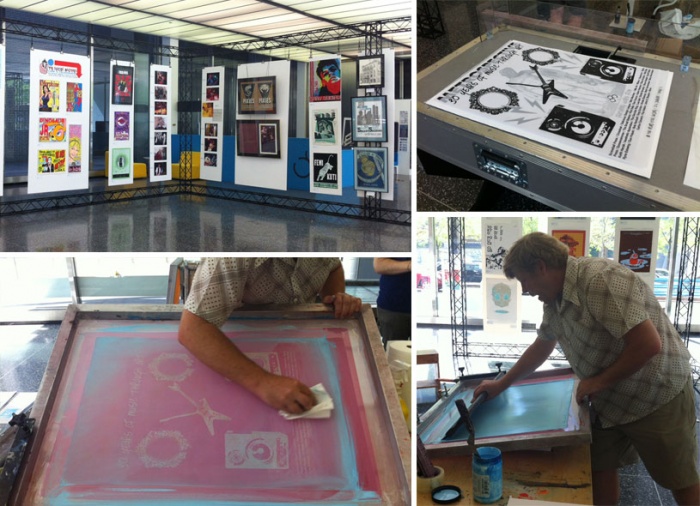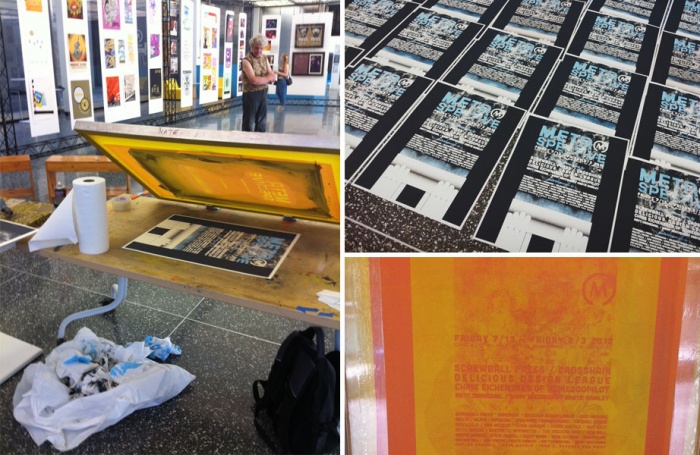
Watching Steve Walters work is a peaceful experience. He has the ability to make the physically demanding and labor-intensive process of screen-printing look deceptively simple. As he repeatedly aligns the image, pulls a thin coat of ink across the top of the screen, lowers the screen to the paper and applies force, pushing the ink through the holes in the mesh, you begin to think that screen-printing takes no time, effort or skill.
That’s how you know you are watching a master at work. Walters, a self-taught screen printer who has been working under the moniker Screwball Press for 21 years, is frequently referred to as the godfather of screen-printing rock ‘n’ roll posters. A major influence to newcomers in the Chicago screen-printing scene, Walters is the go-to man for the Metro when they are looking to print their next run of posters.
Walters career took off fast, rising quickly from his basement studio to printing posters for major labels like Capital Records. He is quick to downplay his skills, crediting the supportive and encouraging local community for his success. Walters describes the community as a place where “everyone has their own style and no one is stepping on each others toes. It’s a good community that creates a healthy competition.”

All posters displayed in the Metrospective exhibit were created using screen-printing, some were even printed by Walters himself. Designers love the screen-printing process because it allows them to create a product with their own hands, giving them a greater degree of control over the final outcome. Another perk of screen-printing is that it creates limited edition posters: even an established venue like the Metro only prints 100-200 posters for a show.
The value of the posters is increased because they are handmade, making them desirable to collectors who sometimes are not even fans of the music they are promoting. “Some people only buy posters for shows they were at, other people could care less and just want them for the art work,” Walters said.
Metro designers Dan Polyak and Ryne Estwing were on hand to field questions during Walters’s live screen-printing session. Estwing spoke about the challenge of balancing his preferred design aesthetic with the posters ultimate goal of advertising. They also touched on innovation and how the ability to use only three or four colors in a single posters forces designers to be creative when choosing a color palette. To get around these limitations designers often incorporate colorful paper stock, use half tones to create depth or layer multiple colors.
Despite its physical intensity and time-consuming nature, screen-printing’s popularity is growing. Polyak explained that large media outlets like HBO and ShowTime are using screen-printing to advertise for some of their most popular shows, like True Blood and Dexter, creating limited edition artwork that make the fans go wild.
If you want to get your hands on some limited edition prints be sure to stop into the Metro’s store. For those interested in honing their personal screen-printing skills, Walters offers hands-on classes at Screwball Academy that take students from the initial design to the final product.
